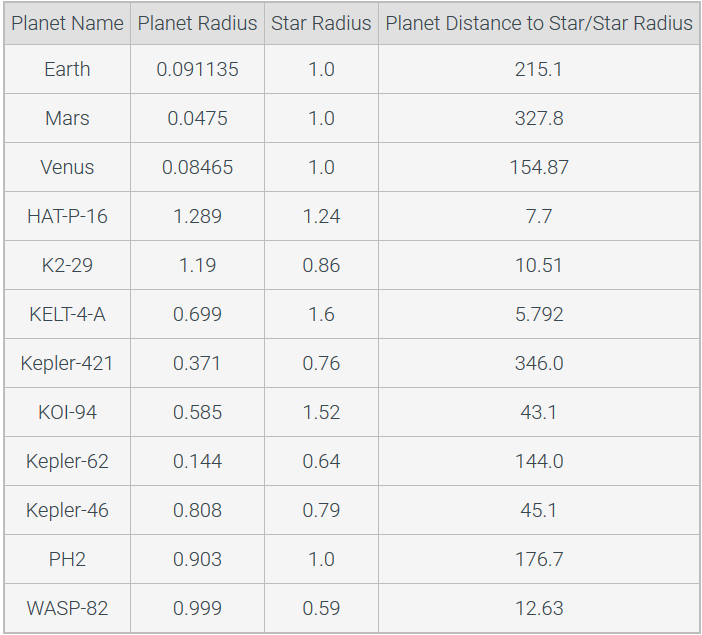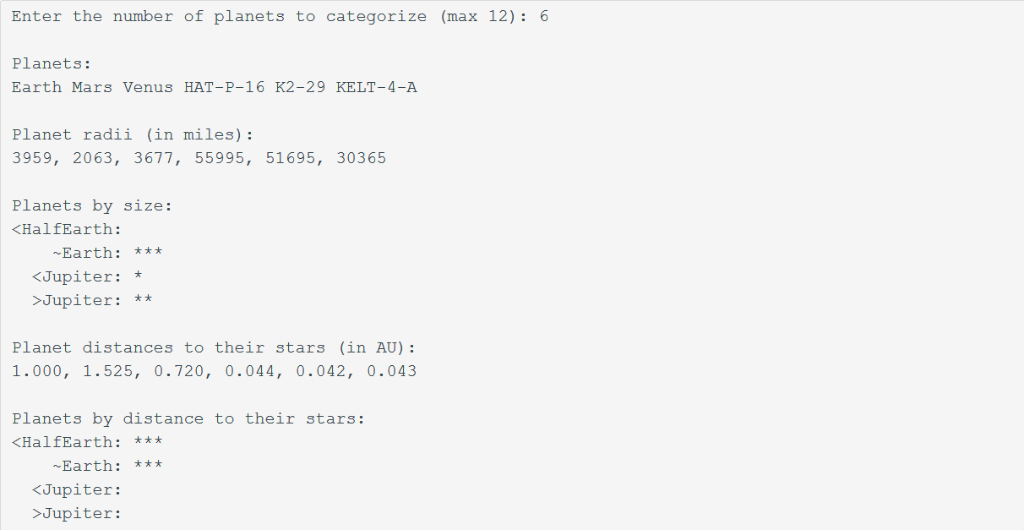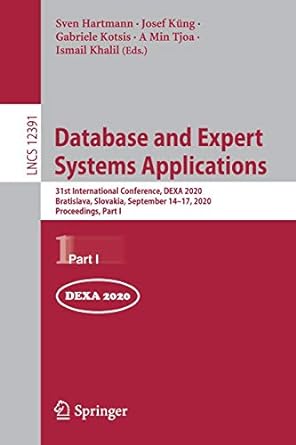Question
Please please in C please, with comments please I would like to understand the process to then do it on my own. Thank you very
Please please in C please, with comments please I would like to understand the process to then do it on my own.
Thank you very much.
From the National Academy of Engineering website: In the popular mind, scientists and engineers have distinct job descriptions. Scientists explore, experiment, and discover; engineers create, design, and build. But in truth, the distinction is blurry, and engineers participate in the scientific process of discovery in many ways. Grand experiments and missions of exploration always need engineering expertise to design the tools, instruments, and systems that make it possible to acquire new knowledge about the physical and biological worlds. In the century ahead, engineers will continue to be partners with scientists in the great quest for understanding many unanswered questions of nature. This project is focused on exploring real data on exoplanets (and some a little closer to home). An exoplanet is a planet outside our solar system, orbiting around another star in our galaxy. Most of the exoplanets that we know of today have been discovered in the past two decades using NASAs Kepler space telescope. In general, we are looking for exoplanets that are Earth size and within a habitable zone around a sun-like star, as that may be our best hope of finding life elsewhere in the universe.
Here is a small subset of the data that has been collected on exoplanets (in addition to three planets closer to home):

The units associated with the columns of data are given here:

Note: the rightmost column is the ratio of the planet distance to its star TO its star's radius.
Note: the planet size (radius) is given as a proportion to Jupiter's radius (that's just a convenient unit on the exoplanetary scale). For example, the Earth has a radius that is 0.091135 times that of Jupiter (i.e. Earth has a radius about 9% of Jupiter's radius). The star radius is given as a proportion to our Sun's radius (thus, Earth and Mars have star radii of 1.0).
Programming Tasks
CODE SETUP
- Create and fill arrays with the data for the 12 planets from each of the columns in the table. There should be 4 total arrays of size 12 at this point, but you will make more later. You will use all of these arrays in this Project as you categorize the planets.
- Read in a single integer value from the user, which is the number of planets that the program should include in the remaining calculations and output. For example, if the user enters 6, the program should perform the analysis below for the first 6 planets in the table and produce the sample output shown below.
PLANET RADII IN MILES
- Make an additional array to hold planet radii in miles for each planet. Fill this array by calculating the radius in miles of each planet using the data in your arrays. Note: the radius of Jupiter is 43441 miles. Then, print out the radii (in miles with no decimal places) for all of the planets in a list (see sample output below).
- Create a histogram where the planets are binned (i.e. grouped) based on their radii (see sample output below). Do this by counting the number of planets in the data whose radius falls into the specified ranges (Note: the radii of Earth and Jupiter are 3959 and 43441 miles, respectively.):

PLANET DISTANCES TO STAR
- Make an additional array to hold planet-distance-to-star values for each planet. Fill this array by calculating the distance from each planet to its star using the data in your arrays. Note: the units for the distance must be Astronomical Units, AU (or the typical distance from the Sun to the Earth, where 1 AU = 215 solar radii). Then, print out the distances (in AU units with 3 decimal places) for all of the planets in a list (see sample output below).
- Create a histogram where the planets are binned (i.e. grouped) based on their distance to their star (see sample output below). Do this by counting the number of planets in the data whose planet-distance-to-star falls into the specified ranges (Note: the distance from the Sun to Earth and Jupiter are 1.0 AU and 5.2 AU, respectively.):

Sample Output
Here is a complete sample output from the code, where only the first six planets on the list have been included in the investigation

The current state-of-the-art methods for finding exoplanets is good at finding very BIG planets that are are very close to their stars, which is not a good combination for the habitability of life. You should see this trend in your histograms.
General Comments & Policies
- ALL OF YOUR CODE MUST BE IN main(), since user-defined functions are not allowed for this part of the project.
- Make sure to properly format all output printed to the screen, by closely following the sample output format.
- There should only be a single user input, which represents how many planets to include in the output (lists and histograms)
Step by Step Solution
There are 3 Steps involved in it
Step: 1

Get Instant Access to Expert-Tailored Solutions
See step-by-step solutions with expert insights and AI powered tools for academic success
Step: 2

Step: 3

Ace Your Homework with AI
Get the answers you need in no time with our AI-driven, step-by-step assistance
Get Started


